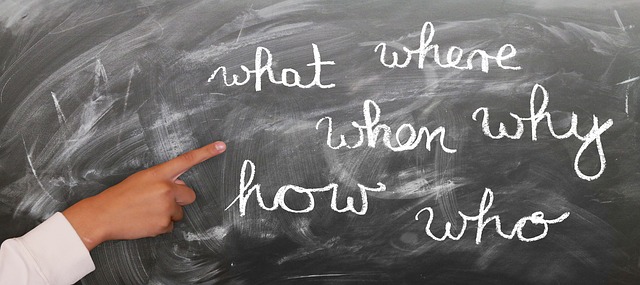The important thing is not to stop questioning; never lose a holy curiosity. — Albert Einstein
Curiosity, that drives learning, critical thinking, and learning behaviours, is one of the key characteristics of a learner. Personality traits like curiosity are as significant as intelligence in determining students’ academic performance. Children often spend a great deal of time reading and acquiring knowledge when they are in curiosity’s grip. Hence, educators and parents should nurture children by encouraging valuable questions and tinkering, looking for teachable moments, and building lessons around current events and critical thinking.
What if we challenge the cliché and lead the way with “curiosity saved the cat”?
Curiosity is a powerful force because of its implacable guides toward answers. And because answering hard problems creates value, curiosity is a fantastic course to follow for an overall development of the child.
Evoking curiosity in your child need techniques which implant an urge to learn and ask many questions. Here are a few techniques that could be useful to evoke curiosity and compel learning.
Go outside of your four walls
Children learn better when they can experience learning, rather than hearing it read from a textbook. Getting outside of the four walls is great for new ideas and a new vision. In fact, practical lessons outside will register better in young brains than learning theory from a book with greater clarity and accuracy.
Encourage innovation
Everyone talks about growth, but many forget that innovation is what brings real growth. Always encourage children to be curious and to propose new ideologies and new ways of doing things. Without innovative thinking, you get one doing a task the same way because “that’s how we’ve always done it.”
Interact with others
One can learn a lot from asking questions and listening to each other. Being curious about the experiences of others can often bring new insights. Individual differences and different perspectives can transform the classroom into a storehouse for an exciting new mode of learning together to happen. The same applies when learning at home.
Question everything, encourage children to be sceptical
The greatest creative minds question everything. They foster environments that encourage creativity and exploration of diverse perspectives. A sceptic requires additional evidence before accepting someone’s claims as true. She is willing to challenge the connatural with open-minded, deep questioning.
Develop perspectives on why something happens
Curiosity is the core of all creativity, the drive to do something better, to gain knowledge, to experiment, to tinker, to create. All children are superb learners. They take risks, are intellectually playful, try things out, make productive mistakes, and learn deeply. As parents, understanding how this works will help you understand the psyche of the child.
Slow down and take your time
In the era of dynamic lifestyles and instant gratification, devoting a significant amount of time towards thinking is essential, especially when it comes to creative problem-solving. It is important to re-imagine learning methods to build inspirational creative learning spaces (physical and psychological) for children, both at school and at home.
Teamwork and collaboration
To co-create a curiosity, classroom requires some degree of comparison among students, and that is where teachers can introduce the concept of “we” instead of “I” and can listen to the multitude of opinions in the classroom with equal respect and attention.
Welcome possibility thinking
Pose the question “What if?” in as many ways as possible, helping children naturally think of creative possibilities. Brainstorm or conceptualize the unimaginable in many ways possible as this helping children think naturally. Nurture the thoughts that generate curiosity and creative possibilities. Again, the educators encourage students to work together in groups so that they inspired from other’s ideas.
Teachers and parents both have a role
Teachers play a critical role in helping students transform their curiosity into an inquiry, by facilitating, focusing, challenging, and encouraging students in active engagement. Supporting curious children is best achieved when teachers themselves are curious, and when they are excited, involved, self-directed, and ready to try new things.
At home when a parent is a co-learner, the knowledge and insight that the child brings from the classroom are just as important and equally worthy to learn.
A research called ‘The Hungry Mind‘ published on Perspectives on Psychological Science says – Intellectual curiosity is a pillar of academic performance, alongside intelligence and effort.
In a nutshell, Curiosity acts as a catalyst for other 4 Cs – Clarity, Communication, Connectivity and Competence. This means once the child is curious enough other Cs automatically fall in place resulting in the overall development of the child.
Immersed learning cycle initiated by curiosity looks like the following in NumberNagar:
- The learning cycle begins with Curiosity, where the urge to learn is kindled.
- Students gain concept Clarity through clear instructions, activities and detailed explanation of the concepts.
- Clarity across multiple concepts leads to Connectivity amongst concepts, topics, and subjects.
- When these Cs are successfully accomplished, Communication of one’s understanding effectively forms an essential part of the learning cycle.
- When these 4 Cs are achieved continuously and consistently over a period of time, it leads to Competence.
Tech can help in making this learning process much smoother by evoking curiosity with a blend of experiential learning with physical touch and feel and digital content.
tl;dr
Sparking curiosity is one key contributor to children’s learning and overall growth. Developing perspectives, possibility thinking, teamwork and collaboration, and several other strategies can help reignite youngsters’ passion for learning.
Parimita Krishna
Latest posts by Parimita Krishna (see all)
- How Personalised Learning can make your kids curious? - 14 June 2019
- What’s new in CBSE and why Experiential Learning is even more relevant? - 31 May 2019
- The Curious Case of Homeschooling in India - 5 April 2019
- Making Maths fun for your kids - 8 March 2019
- Blended Learning: A Perspective on “Learning how to Learn” - 22 February 2019

